Brentford have been remarkable in set pieces this season in the Premier League. They ranked second alongside Tottenham with 16 goals and after Liverpool who scored 17. The West Londoners scored 16 of their 58 goals in the Premier League this season from set-pieces, which is about 27.5 percent.
Based on the above, it is not surprising when you know that Brentford are in second place in expected goals from set pieces with 18.51 after Newcastle United with 20.85.
As for the corners, they ranked fourth in the number of goals scored from corners in this season of the Premier League with 8 goals, joint with Leeds United. They are preceded by Arsenal and Tottenham Hotspur in first place with 12 goals, Manchester City and West Ham in second place with 10 goals and Fulham with Liverpool in third place with 9 goals.
Thomas Frank‘s team is very distinctive in set pieces, whether from free kicks, throw-ins, corners, or even goal kicks. Their playing style relies on maximising the benefit from set pieces, but in this tactical analysis, we will discuss how they are excellent and different in their brilliant corner routines. This set-piece analysis shows the different tactics they use like short corners, flicks and packs.
Short corners
The first main idea we will talk about is the numerical superiority in the short-corner area. In the first photo, we see four players, highlighted in green, against two players, in yellow. The taker passes it directly to the player with the black arrow.
To know why that looks simple, we need to go to the second pictiure where Leicester City defend with five zonal players, in green, three man markers in the black area and two players for the short option and the rebound. Brentford have their all ten players in the shot which is risky, but achieve the numerical superiority around the short and rebound zone. When the player who has the ball passes the ball to his teammate, the player with the yellow arrow stepped back, dragging Leicester’s last zonal player.
In the third photo, the taker, highlighted with a yellow arrow, runs behind Leicester’s line while they try to reorganise their high line. The five zonal players, in green, can stand as a line, but the two short-option players, with black arrows, still try while the taker, with the yellow arrow behind them, runs in their blind side.
The most important note in this routine is Brentford’s four players who still stand in the offside zone which makes James Maddison late with his marker and worried about this situation, so the corner taker is onside. This trick also helps Brentford’s players to get the cross easily from the taker, as shown in the fourth photo.
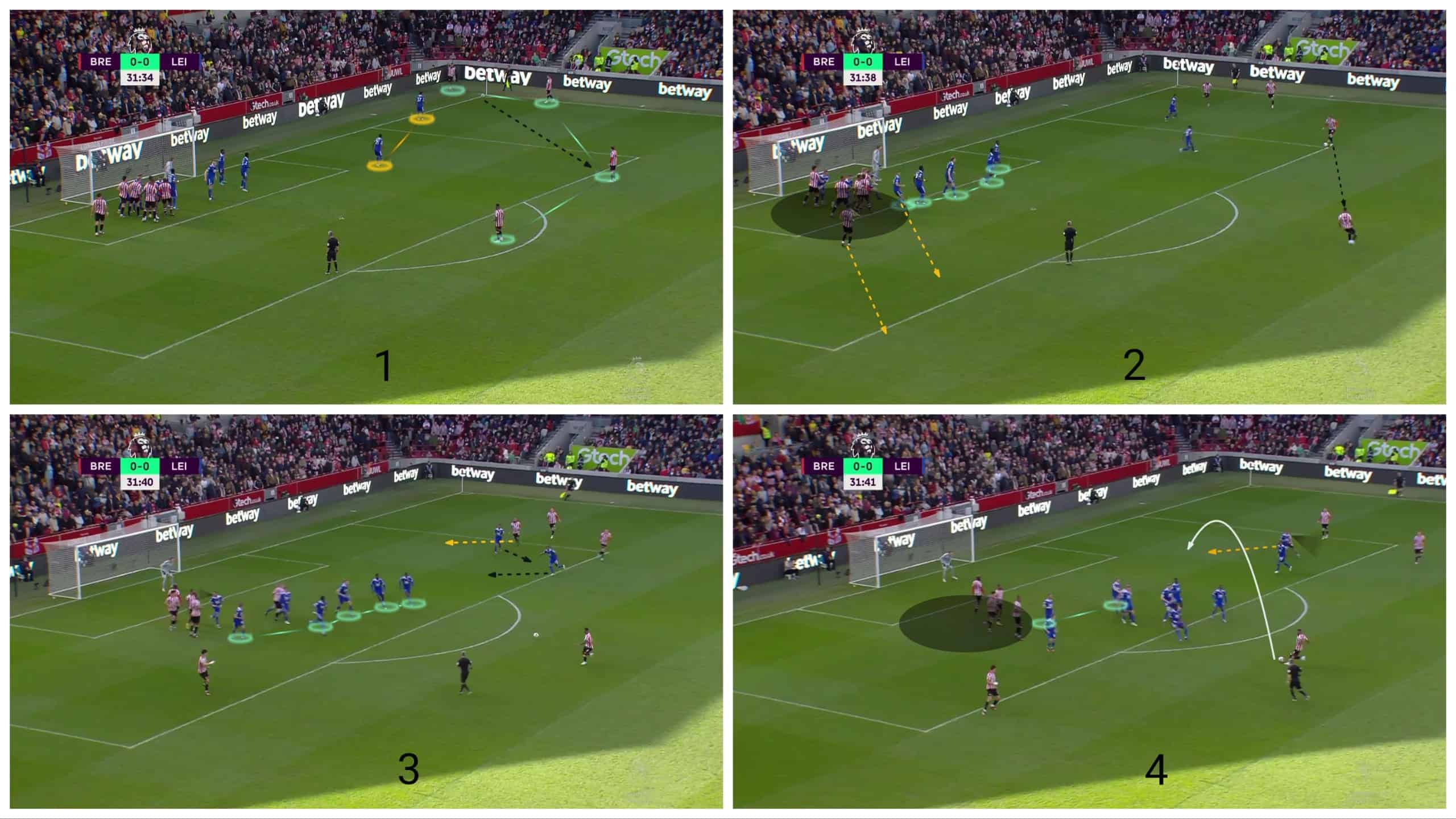
In the first photo, the cross should have been played there as shown but the cross is too short so the defender gets the ball, as shown in the second photo. In the third photo, the player in green gets the ball while Brentford’s attackers are framing the goal. The result is a goal, as shown in the fourth photo.
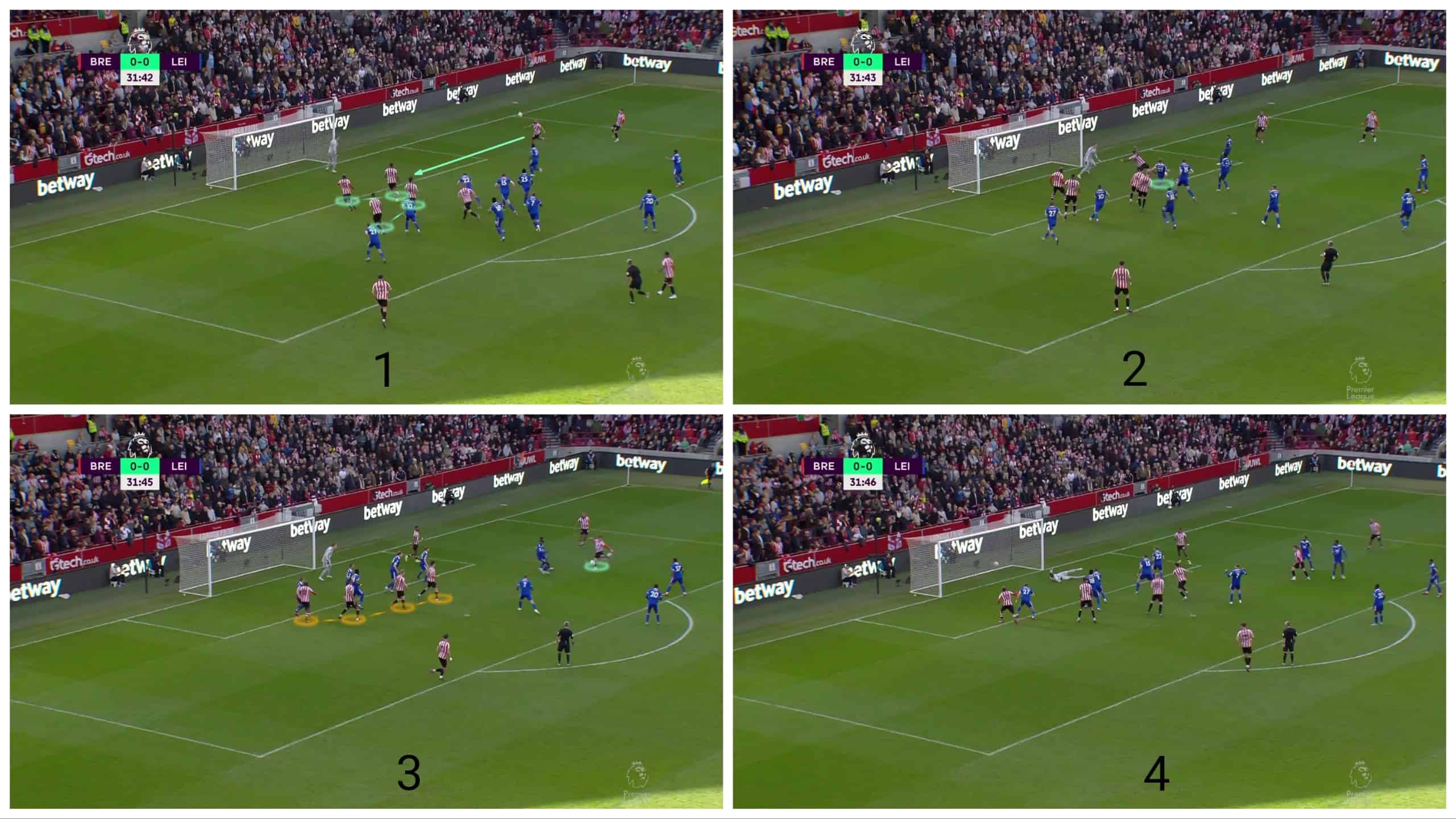
Flicks
In the first photo, Everton defend with five players in the first zonal line, three man markers, in green, a player for the short corner, in black, and a zonal player, in yellow, who has to cover his area if the cross is played and go to defend the rebound zone if the corner is played shortly.
The second photo shows the player with the green arrow, who will flick the ball, coming from the defender’s blind side but they need to block the zonal player, highlighted in yellow, which is the job of the first player in Brentford’s stack.
The third photo shows the second part of the plan which is how the player with the yellow arrow will get the flicked pass. The second player of the stack, with the green arrow, runs to block the fourth zonal player while Ivan Toney, the third man in the stack who is highlighted in black, still stands in his position to attract the attention and get the first touch if the outswinging cross is overplayed.
In the fourth photo, they manage to get the first touch with the help of the yellow block. The red player is free now with the help of the green block to the zonal player. He also starts to move when his teammate flicks the ball while also exploiting the bad orientation of his marker who can’t track him and the ball at the same time.
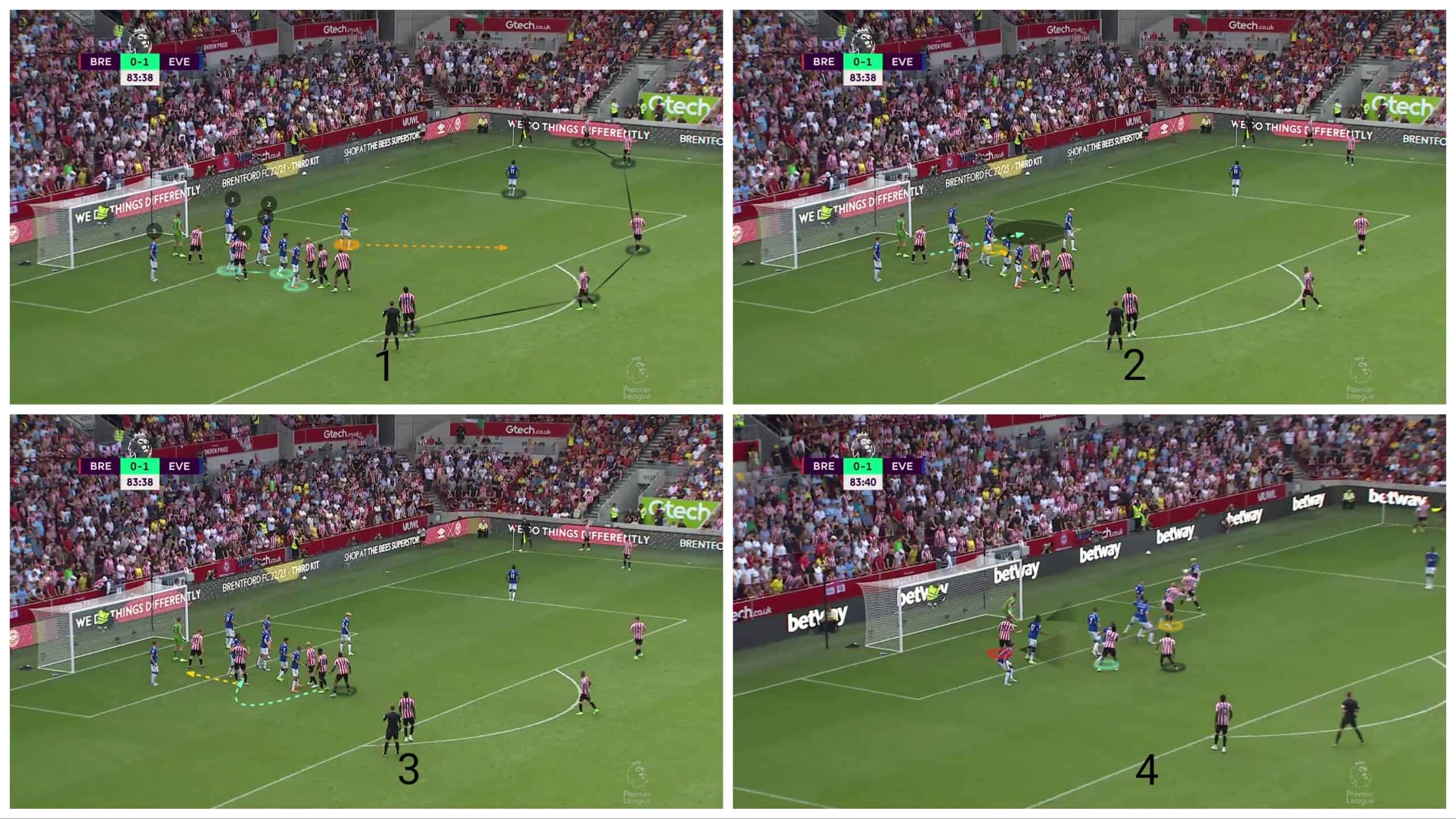
The result is a brilliant goal. After that corner, we know the benefits of stacks and why many teams prefer to make two or more players stand in a stack. Stacks make it easy for the attackers to move in different directions at the same time which makes it difficult for the markers to track them. Every team specifies the duties of the stack’s players depending on the designed routine.
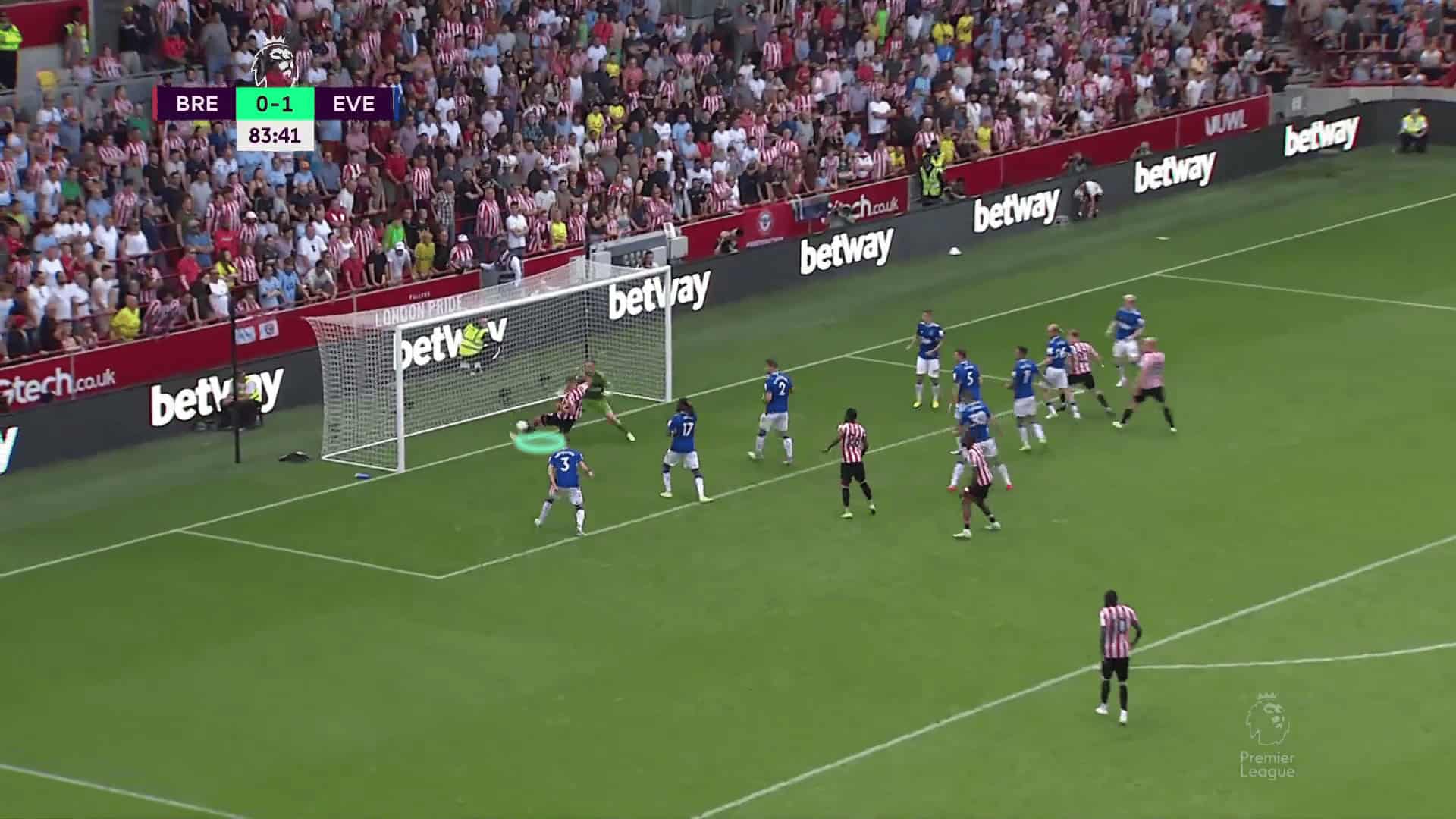
Here, against Gianni Vio’s Spurs, Brentford manages to score a well-planned goal against Tottenham which is difficult. Let’s start with Spurs’ shape which is five numbered players in the first zone line. There is a zonal player, highlighted in green, to get the first touch and has a duty to defend the short corner if it happens, two yellow second-zone players, a red player for the short option, and a player in black to defend the rebound zone.
In the second photo, as the taker steps back to take the corner, the routine begins. There are three players in a green stack who have three different roles. The target man, with the green arrow, moves to the black targeted area. The player with a red arrow goes to block the second player in the first-zone line, and the first man of the stack, with a small blue arrow, blocks the first player in the second-zone line who is in front of him.
In the same photo, the player with the yellow arrow runs to the short option, dragging his opponent with the yellow arrow to empty the space behind him. The player with a black arrow, who starts behind the first zonal line, blocks the first player in the first-zone line.
The second half of the routine is shown in the third photo. Ivan Toney, in green, will start to move at the same moment as the flick, exploiting the defender’s eyes on the ball. In the fourth photo, the first target player gets the ball in the black area with the help of the four mentioned movements and blocks while Toney starts to move with the yellow arrow.
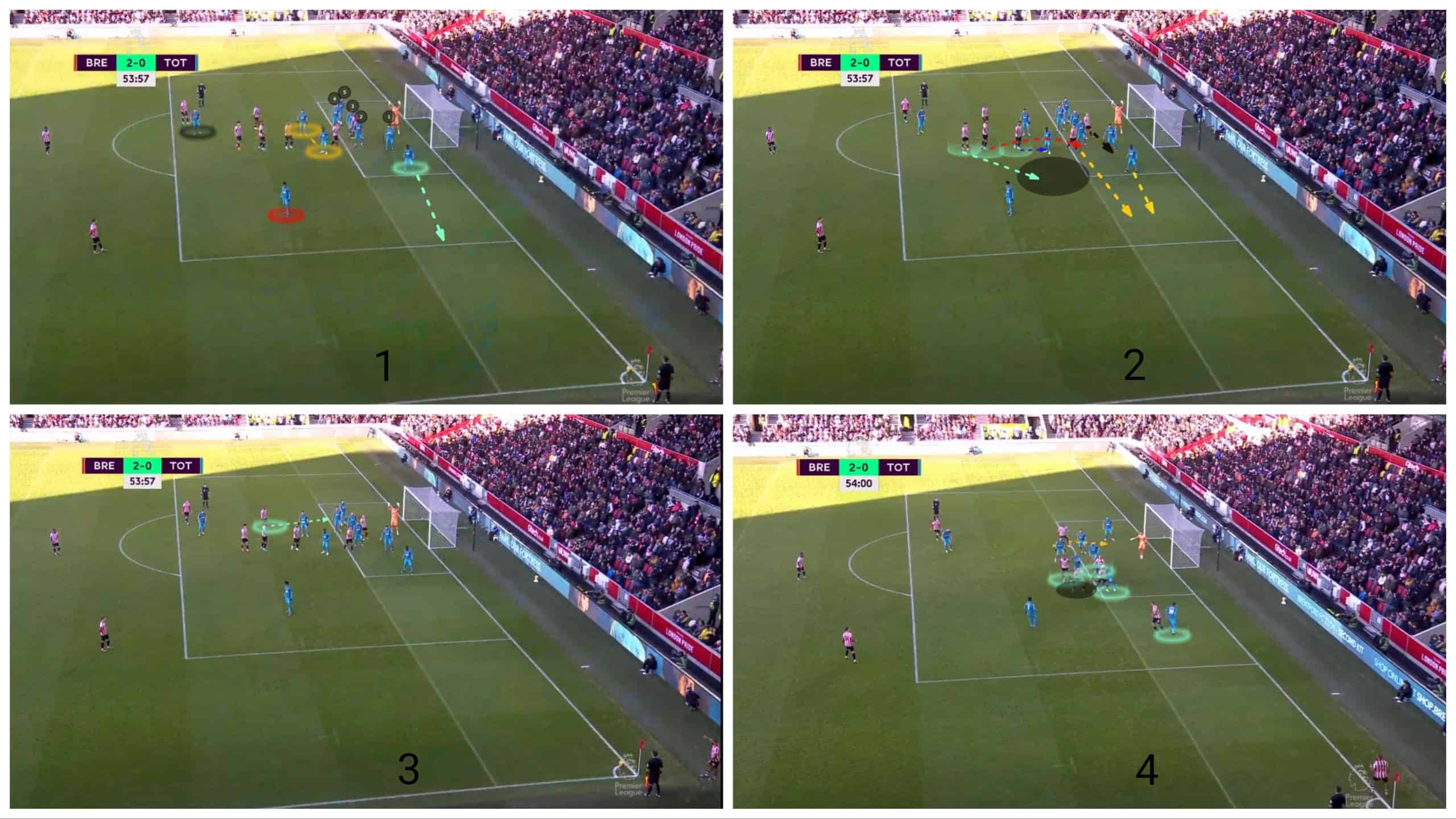
The result is an important goal.
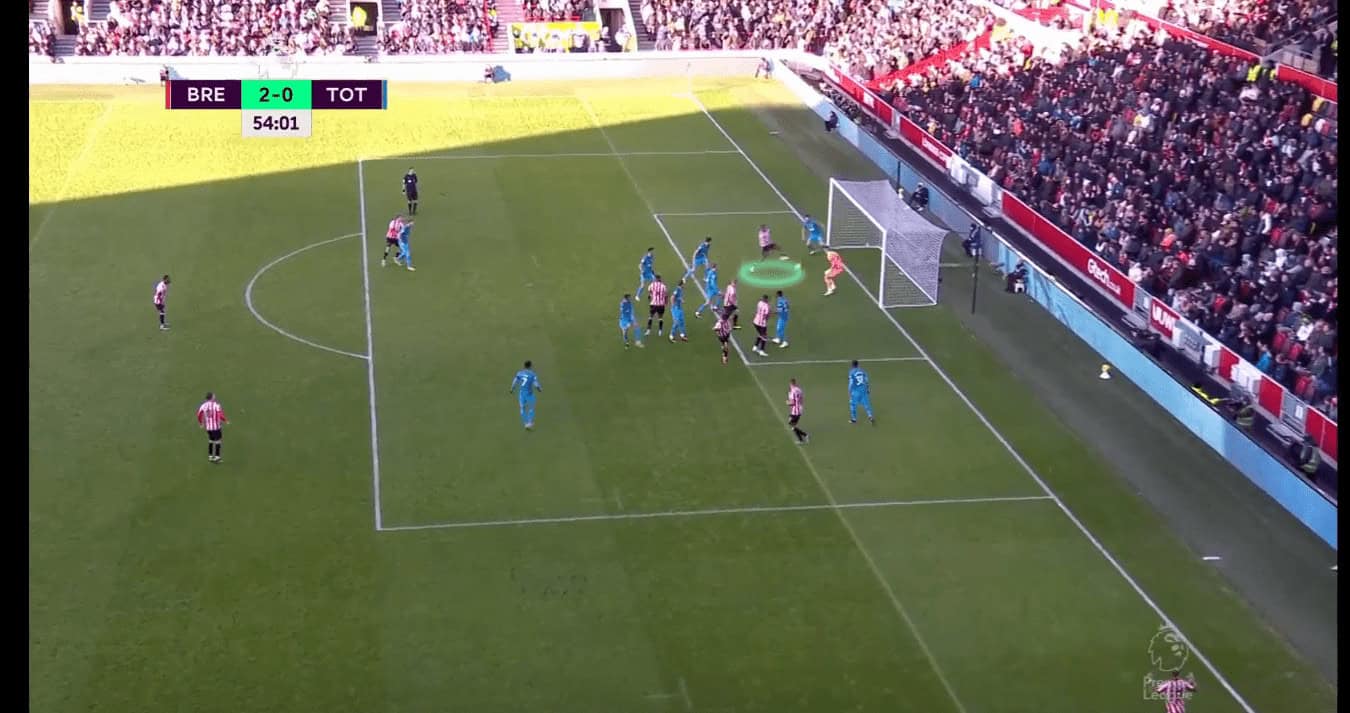
Packs
Brentford is also one of the best teams at using packs to do screens and blocks to free a player from his marker which is called dismarking. Here, against Fulham at Craven Cottage, Thomas Frank’s side had an excellent routine, but this time the routine is more simple. As usual, let’s start with how Fulham defend corners.
The first photo shows that they defend with five players in the first-zone line: a player in yellow in the second-zone line, a green-highlighted player to defend the short option who is taken out of the game because the two takers force him to get closer, two blue man markers and a player for the counterattack who is out of the shot.
The second photo shows that there is a 3v2 situation that causes a free man who will score the goal. In the third photo, the benefit of the pack is shown. The three players are close to each other which helps the two players to block their opponents, making it easy for the third one, with the green arrow, to go to the targeted zone.
We still need to prevent the two zonal players who are close to the targeted area from getting the cross, so Brentford’s two players in yellow block them.
In the fourth photo, the three blocks are done, highlighted in green, but they need a player to go to the far post to get the rebound ball in case it is kicked there. Then, the goalkeeper punched it. It is the role of the player with the yellow arrow who is doing the block to go to the far post, exploiting the fact that his marker tries to catch the free man.
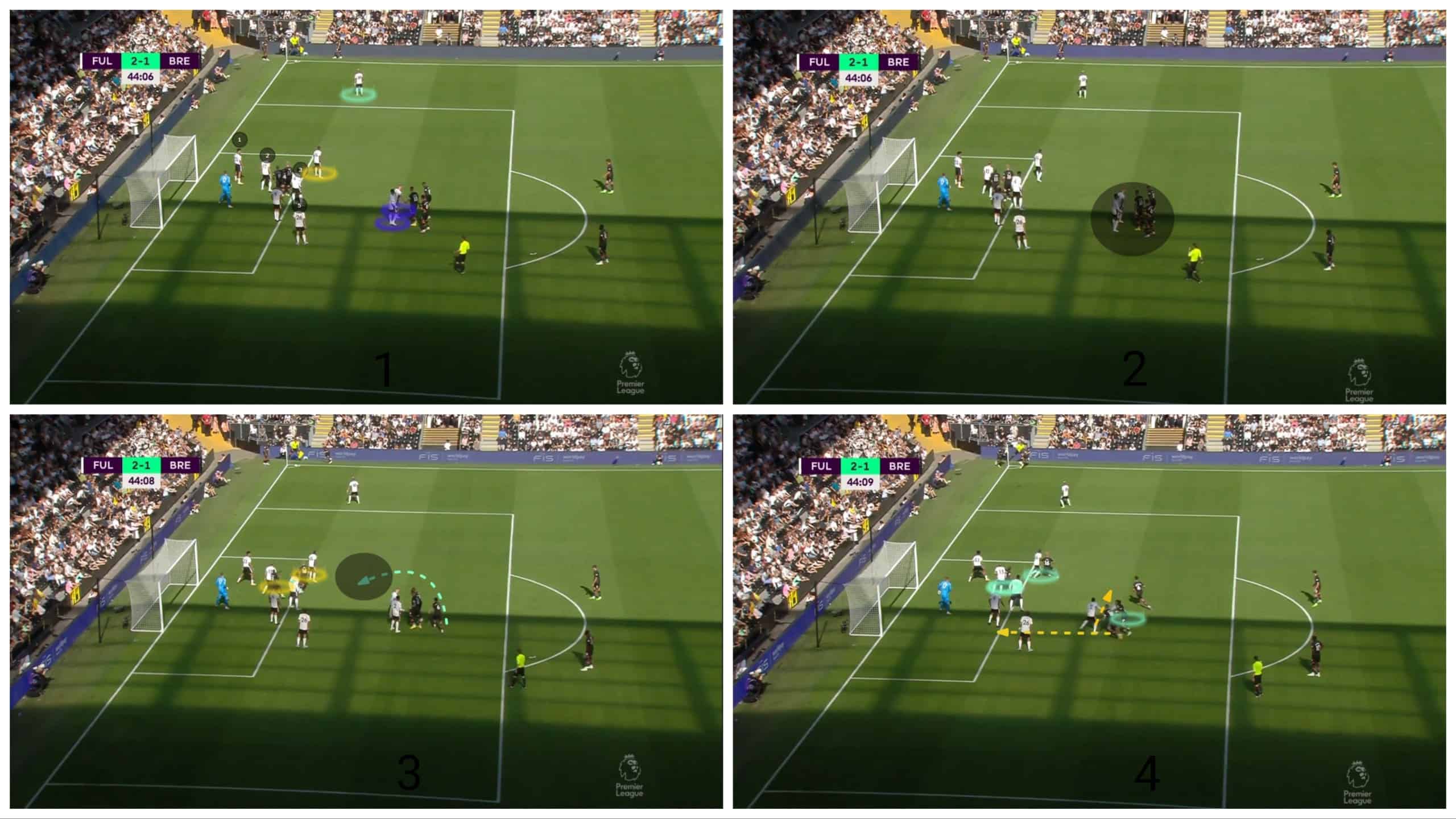
The result is a goal, as shown below.
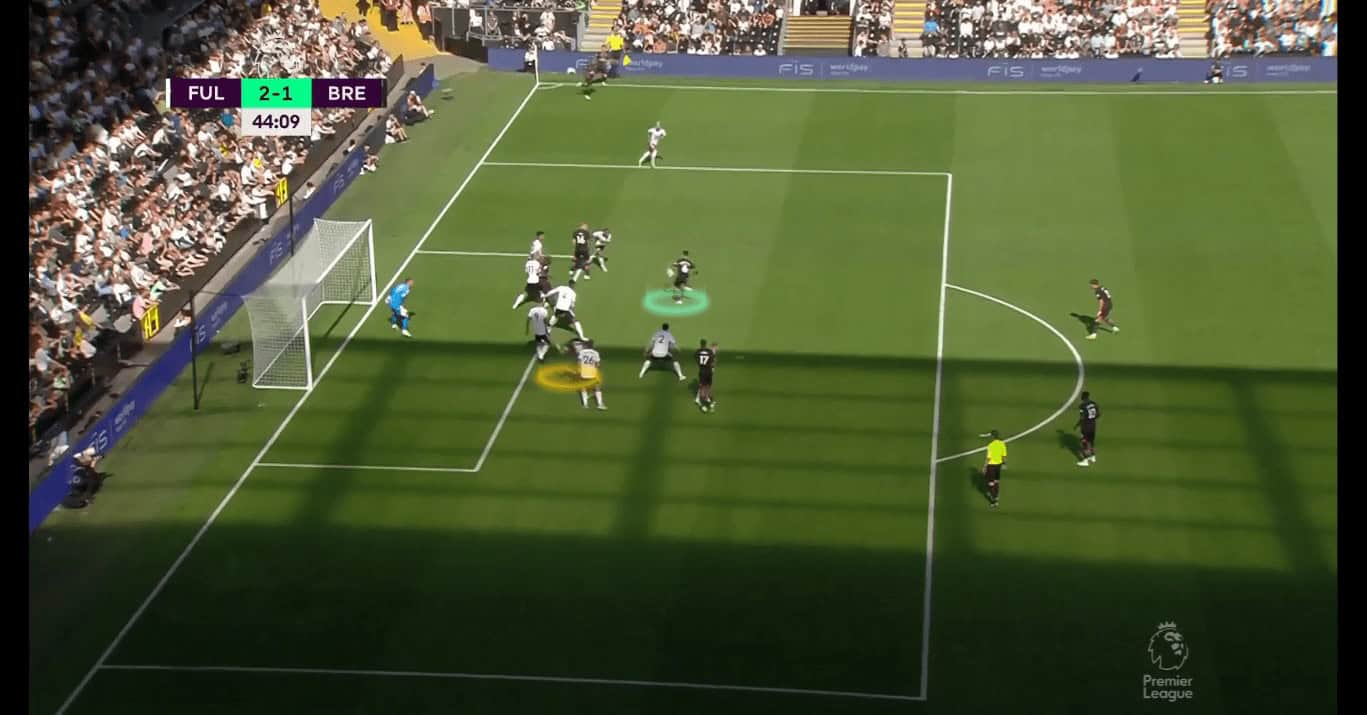
Conclusion
This analysis has shown how Brentford was a great team from set pieces this past season, especially from corners. They have many varied ideas that surprise the opponents.
Brentford have distinctive ideas that vary depending on the opponent. Sometimes they depend on flicks, sometimes they target the far post and sometimes they resort to playing short corners. When the opponent decides to mark man to man, they have many ideas to escape from marking through screens with the help of their ‘packs’.
Another noticeable thing about their routines are the complexity. Contrary many set-piece coaches believing that simplicity is one of the most important principles of designing corner routines, Brentford use complex routines, especially in short corners. But it must be said that when the players succeed in understanding and executing the routine, the result is amazing and surprising for the opponents.





Comments